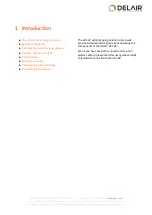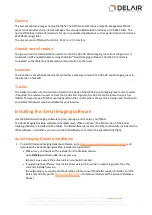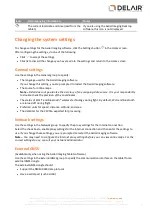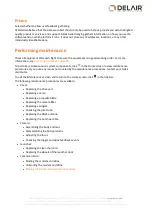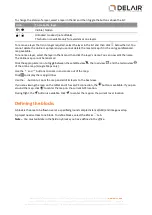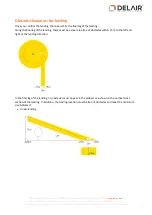
Designing a flight plan to meet the project requirements
There are many factors that can influence the success of a project. Good project planning is one of them.
A carefully planned project will ensure that flights are executed safely and that the captured data can be
processed successfully.
The quality of a project’s deliverable is often linked to its accuracy, referring to the positional accuracy of
the final output result. A project is processed based on geospatial coordinates, which are automatically
acquired during the flight. The output result has a relative accuracy of several times the GSD.
The GSD (ground sample distance) specifies the distance on the ground represented by the pixel of a
captured image. It depends on the camera sensor’s pixel size and lens focal length. The smaller the GSD
value, the more detailed the images. The GSD and the height at which the rover flies are linked. The higher
the rover flies, the larger the distance on the ground represented by each pixel in the images acquired
during the flight.
Other factors that impact the final output result include PPK, ground control points (GCPs), image overlap,
and camera settings.
If you need centimeter-level absolute accuracy, the rover should operate with PPK. PPK requires data from
a reference station. This station can be a local base station (with or without a precisely known position) that
you set up before the flight or a network reference station, such as CORS, that you access after the flight.
The absolute accuracy can be much improved by using ground control points (GCPs) if PPK is not available.
A ground control point is an accurately surveyed coordinate location for a physical feature that can be
identified on the ground. Use at least 5 GCPs, which are evenly spread over the area of interest.
The percentage of image overlap allows processing software to correct for errors in the position and
orientation of the aerial images (a rover is a dynamic platform with position and orientation sensors that
are not that precise). Delair recommends having a forward and sideward overlap of 80% which gives the
most accurate results while minimizing flight and processing time. There are some cases where increasing
the overlap may be beneficial. Examples are when flying over dense tree canopy, bodies of water, or large
areas of sand or snow. These often have a shortage of identifiable features in the images that can be used
as tie points for the image adjustment.
Image overlap also varies with changing terrain elevation and features. Use blocks at different heights to
ensure the same level of overlap for all areas of interest (see the images below). The image on the left does
not take into account the terrain elevation, which results in a varying amount of overlap. The image on the
right does take into account the terrain elevation, ensuring the same level of overlap for all areas of
interest.
20
Delair-Tech
|
676, Rue Max Planck – 31670 Toulouse-Labège, France
|
Tel: +33 (0) 5 82 95 44 06
|
Capital: 238 110,30 € - APE: 3030Z – Intra-Community VAT number: FR90 53 09 69 781 – 530 969 781 R.C.S. Toulouse
This document is the sole property of Delair-Tech and cannot be used or reproduced without the written authorization of Delair-Tech
.


